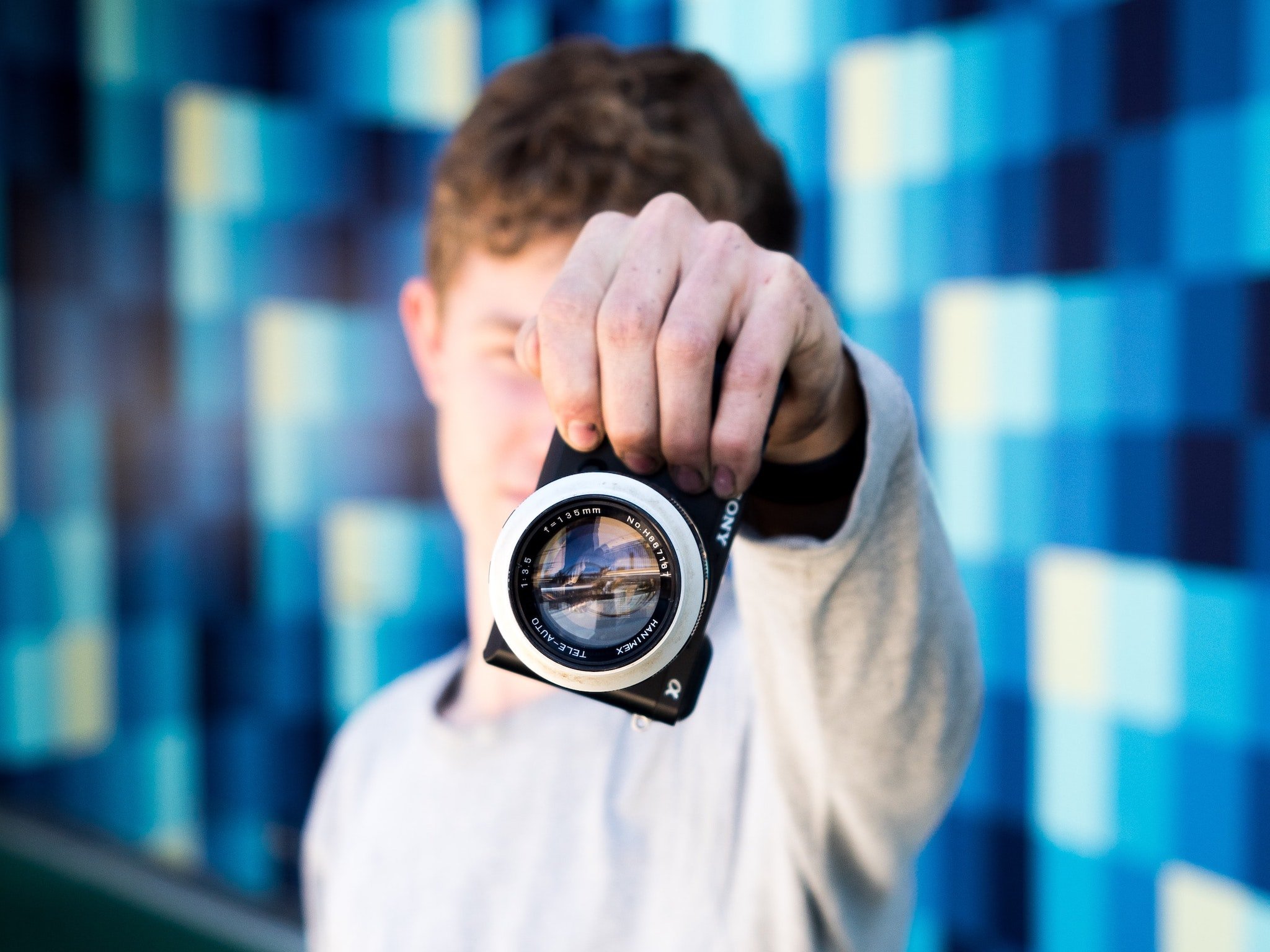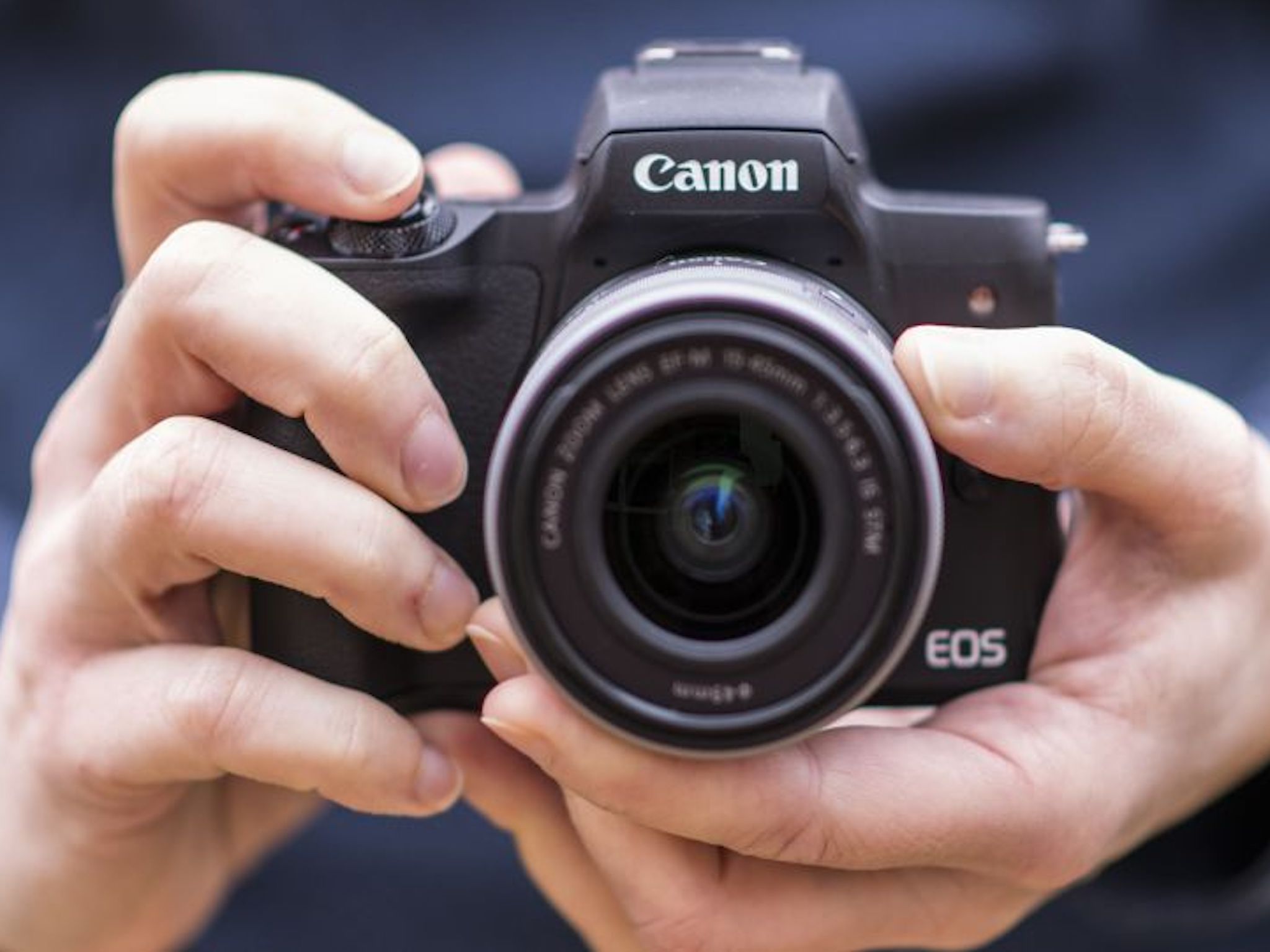Sony A6100 vs Canon M50: Which one should you buy?


A strong video and stills camera
The Sony A6100 goes to bat with excellent autofocus tracking, a robust lens catalog, a long-lasting battery, and a compact body. It has a low-res screen and a deep menu system, but it so impresses us so much that it's made our list as one of the best digital cameras this year.
Pros
- Superb autofocus
- Takes sharp video and photos
- Good range of available lenses
- Rich colors
- Touchscreen swivels
Cons
- Low resolution touchscreen could be better
- Confusing menu system

An excellent starter camera
The Canon M50 has a beautiful touchscreen, a logical menu system, and it outputs fantastic stills. The battery life is nothing to brag about, and there still aren't many available lenses for this camera, but we still think it's a steal.
Pros
- Responsive touchscreen
- Lightweight
- Comfortable grip
- Great image quality
- Good EVF
Cons
- Poor battery life
- 4K video has 1.6x crop
- Limited available lenses
The A6100 comes out of Sony's mature a6000 line. Turning heads since early in 2014, the Sony A6000 lineup is known for its fast autofocus, small body size, and thoughtful software touches. The newish A6100 takes a place on our list of the best Sony Digital Cameras for a good reason. The Canon M50 has those beautiful Canon colors we all gush over, a comfortable, deep grip, and a price point that's difficult to pass up. If you're already invested in Canon, the M50 will thrill you. For everyone else, grab the Sony A6100.
What are the big differences and similarities?

The biggest differences in our Sony A6100 vs Canon M50 battle comes down to size, battery life, and brand maturity. Both mirrorless models are aimed at entry-level photographers but have enough advanced features to please hobbyists. The A6100 from Sony has class-leading eye autofocus that works on animals and people. Sony has been leading the mirrorless market for years and has more experience under its belt than Canon here. If you take pictures of the family, action, or pets, Sony is the brand to choose. If you have large hands or prefer a bigger grip, the Canon M50 may be more to your liking. It looks and feels like a small DSLR and has a friendlier menu and price tag. Let's take a look at both cameras internals first.
| Header Cell - Column 0 | Sony A6100 | Canon M50 |
|---|---|---|
| Release date | 2019 | 2018 |
| Megapixels | 24.2MP | 24.1MP |
| AF points | 425 | 143 |
| Animal eye AF | Yes | No |
| Speed | 11 | 10 |
| Video | 4K/30p | 4K/24p (w/1.6 crop) |
| Weather sealed | No | No |
| Battery life | 420 shots | 235 shots |
| LCD | Swivel | Tilting |
| LCD screen resolution | 922k dots | 1.040k dots |
| Touchscreen | Yes | Yes |
| Viewfinder coverage | 100% | 100% |
| IBIS | No | 3-Axis digital (Video Only) |
| Flash | Yes | Yes |
| Built-in mic | Yes | Yes |
| Wi-Fi | Yes | Yes |
| Bluetooth | Yes | Yes |
| Weight | 13.96 ounces | 13.75 ounces |
| Dimensions | 4.72 x 2.63 x 2.34 inches | 4.6 x 3.5 x 2.3 inches |
| Kit lens included | Yes | Yes |
Both the Sony A6100 and the Canon M50 are remarkable entry-level mirrorless cameras that are worthy of your attention. There are only a few differences between the models, but they're the kind of things that make or break a big purchase and leave me recommending the Sony A6100 without hesitation.
As a wildlife and landscape photographer, autofocus, battery life, and dynamic range are most important to my shooting style. With the Sony A6100, you can take 425 pictures before needing to recharge or replace the battery. The Canon M50 doesn't quite measure up, only getting a little over 200 shots per battery charge. Ouch! If you like to take pictures while hiking or when on vacation, the Canon battery won't last the entire day before petering out.
Another plus for Sony is the swivel screen. If you do selfies or you're into video, you will love the Sony A6100's swivel screen. You can move the screen from its default flat-against-the-body position completely upright, so the screen faces the same direction as the lens. It's excellent for vlogging, clicking family photos, or taking unique angle shots.

Sony's colors also wow right out of the gate. If you're used to importing phone pictures into Adobe Photoshop Camera, you'll be amazed at what you can do with Sony JPEGs and RAW files. Unlike previous generations of Sony cameras that gave a slight greenish hue to skin tones, the A6100 outputs natural skin colors and real-life-looking landscapes.
Sony's strongest feature by far, though, is its autofocus. With 425AF points and eye-tracking, it's nearly impossible to miss a shot whether you're a seasoned pro or a total beginner. Seriously, it's mind-blowing!
iMore offers spot-on advice and guidance from our team of experts, with decades of Apple device experience to lean on. Learn more with iMore!
The Sony A6100 is on the small side. If you have big hands, you won't dig the shallow grip or miniature controls. And though it has a functional touchscreen, it has subpar LCD resolution. Canon takes the cake here with a beautiful LCD that's easy to see in all light. Another downfall of Sony is the menu system. It's deep, confusing, and has a teeth-gnashing learning curve. Once you understand where everything is, you'll be golden, but until then, be forewarned that Sony's menu is still the same mess it's been for years.

Canon has always produced comfortable to hold cameras. Whether you're an actual photographer or just like to take pictures, you know how important this is. The M50 gets high marks here. The grip is deep, textured, and feels like it belongs in your hand. The grip keeps the smaller-than-average camera balanced, especially when attaching long lenses.
There's no getting around the abysmal battery life on the M50. Getting only 235 shots per battery charge is an embarrassing miss for Canon. If this is your model of choice, be sure to pick up a few spare batteries because you will definitely need them.

Another downfall is in the video department. Videographers will want to go with the Sony A6100 that does full 4K video. The Canon M50 shoots in 4K but with a 1.6 crop. What's the point? On a good note, the M50 has a 3-axis, in-body stabilization for video to keep shooting smooth. This is a feature the Sony lacks altogether.
So, what's the right camera for you? It depends. If you're a beginner and want an inexpensive, easy camera to work with and don't mind missing out on 4K video, the Canon is a good choice. The menu is simple, controls are easy to use, and even though there aren't many lenses available for Canon's crop sensor line at the moment, it shows promise. If you see yourself pressing the shutter button for years to come, you'll want the Sony A6100. It has a better autofocus system and the entire lineup of Sony cameras is more mature and well-rounded.
All said, in our Sony A6100 vs Canon M50 battle, the Sony is the clear winner.
Jodi Owan works behind a keyboard and a camera. She's a freelance writer for iMore, Android Central, and Windows Central.

